In today’s auto market, sport utility vehicles (SUVs) are more than just oversized passenger carriers — they are the cornerstone of adventure, family travel, and versatile transport. Buyers seeking an SUV aren’t merely looking for a higher ride height or more comfortable interiors.
Many are in search of something more utilitarian: a vehicle that can adapt to changing lifestyles, environments, and needs. Among the most overlooked yet vital features in this category is roof-rack load capacity.
It may not sound glamorous, but for outdoor enthusiasts, campers, overlanders, and even growing families, the ability to carry gear securely on the roof can be a game-changer — or a dealbreaker.
With the surge in popularity of rooftop tents, cargo pods, bike carriers, kayaks, solar panels, and more, the roof of your SUV becomes more than just a shell — it becomes a functional platform. However, not all SUVs are created equal when it comes to how much weight their roofs can actually support.
There’s a wide gulf between what looks capable and what actually is. Some SUVs, even the ones that advertise off-road readiness or rugged aesthetics, come with surprisingly low roof load limits. Others — often with boxy builds or heritage off-road DNA — provide impressive load capacities that match their adventurous appeal.
What’s essential for buyers to understand is that roof load limits fall into two main categories: dynamic and static. The dynamic roof load limit refers to how much weight the vehicle’s roof can safely carry while in motion — this includes driving on highways, off-road trails, or rough terrain.
The static roof load, on the other hand, refers to how much weight the roof can bear when the vehicle is stationary — such as when someone is sleeping in a rooftop tent. While static loads are often significantly higher, dynamic loads are the more practical concern because they dictate what’s safe during everyday travel.
It’s worth noting that a high roof load rating doesn’t just depend on the strength of the roof itself. It involves a combination of factors, including chassis design (body-on-frame vs. unibody), roof rail integration, suspension tuning, vehicle balance, and overall weight distribution.
A robust system is one where all these elements work in harmony, allowing the SUV to carry more while still driving safely and efficiently. Vehicles like the Toyota Land Cruiser or Ford Expedition exemplify this well, offering not just high ratings but also the mechanical resilience to carry gear without compromising stability.
Unfortunately, there are many SUVs that falter in this area, despite otherwise being excellent vehicles. From electric crossovers with heavy glass roofs to sleek city-focused SUVs with decorative — rather than functional — roof rails, limitations abound.
In some cases, the roof-rack capacity is so low that mounting a tent or even a fully packed cargo box becomes a risky proposition. This can be a shocking realization for buyers who assumed any SUV could be adapted for adventure just by slapping on a Thule or Yakima rack.
This article explores both ends of the spectrum. First, we’ll dive into the top 5 SUVs with the best roof-rack load limits — vehicles that are not only ready to haul gear, but actually engineered for it. These are the champions of rooftop utility, ideal for anyone with an adventurous lifestyle or demanding cargo needs.
Then, we’ll pivot to the 5 SUVs with the lowest roof-rack load capacities, highlighting examples where form may have won out over function. These vehicles are still excellent in many ways, but when it comes to roof utility, they leave much to be desired.
Whether you’re a weekend warrior, a full-time vanlifer, a family road tripper, or simply someone looking to maximize every inch of space your SUV can offer, understanding roof load limits is critical. Let’s start by examining the SUVs that truly earn their “utility” badge — the ones built to carry your world on their shoulders.
Also Read: 5 EVs with the Best Charging Port Locations and 5 with the Most Awkward
Top 5 SUVs with the Best Roof-Rack Load Limits
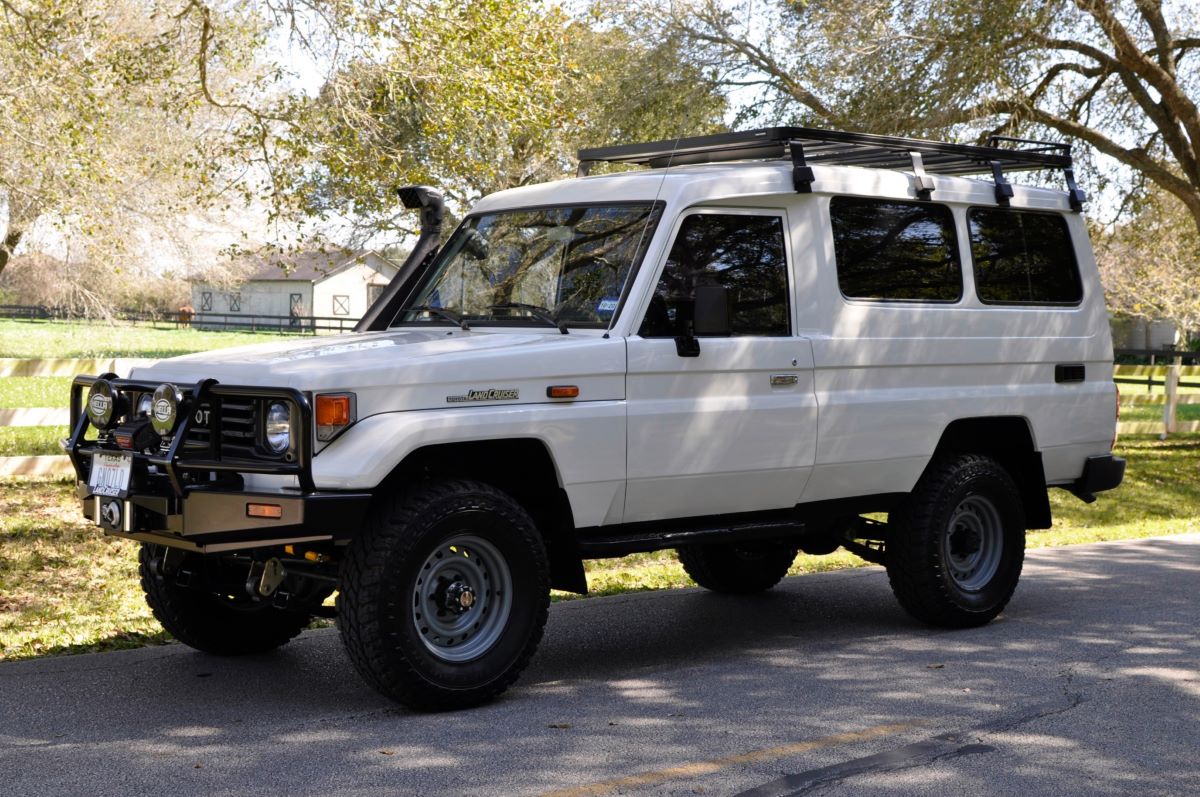
1. Toyota Land Cruiser
The Toyota Land Cruiser has earned its legendary status not only through decades of off-road dominance but also through a legacy of utilitarian design. One of its often-overlooked strengths is its outstanding roof-rack load capacity.
With a dynamic roof load limit approaching 300 pounds on many models — and even more under static conditions — the Land Cruiser is in a league of its own.
That kind of strength is crucial for those looking to mount rooftop tents, cargo baskets, water storage, or heavy recovery gear. Many vehicles on the market simply weren’t engineered with this level of utility in mind, but for Toyota, it was part of the design philosophy from day one.
What sets the Land Cruiser apart is the integration of its rack system into a robust, body-on-frame architecture. Unlike many modern SUVs that have transitioned to unibody construction, the Land Cruiser retains the toughness and modularity that come with a more traditional chassis.
This gives it the mechanical strength to support heavy static loads like rooftop campers or even two-person tents, which can weigh well over 150 pounds. Combine that with Toyota’s extensive aftermarket support — from ARB racks to Rhino-Rack platforms — and you have a vehicle that can be customized extensively without undermining structural integrity.
This vehicle isn’t just about strength, though. The engineering care that goes into weight distribution and suspension performance is equally important. Toyota designed the suspension system of the Land Cruiser to remain stable under variable loads, both on- and off-road.
This matters tremendously when you’re carrying a high roof load, which raises the vehicle’s center of gravity. The Land Cruiser handles this with grace, maintaining stability on the trail and confidence on the highway. Even its aerodynamic profile, while boxy, contributes to predictable wind resistance and load behavior at speed.
Of course, the Land Cruiser doesn’t come without cost. It’s expensive, thirsty, and large, which can be a turn-off for city drivers or daily commuters. However, for those who prioritize rugged capability and real-world load utility, it’s virtually unmatched.
Whether you’re planning a remote desert expedition or a long-term overland journey across countries, the Land Cruiser’s roof can carry more than just gear — it carries a reputation that’s been earned the hard way.
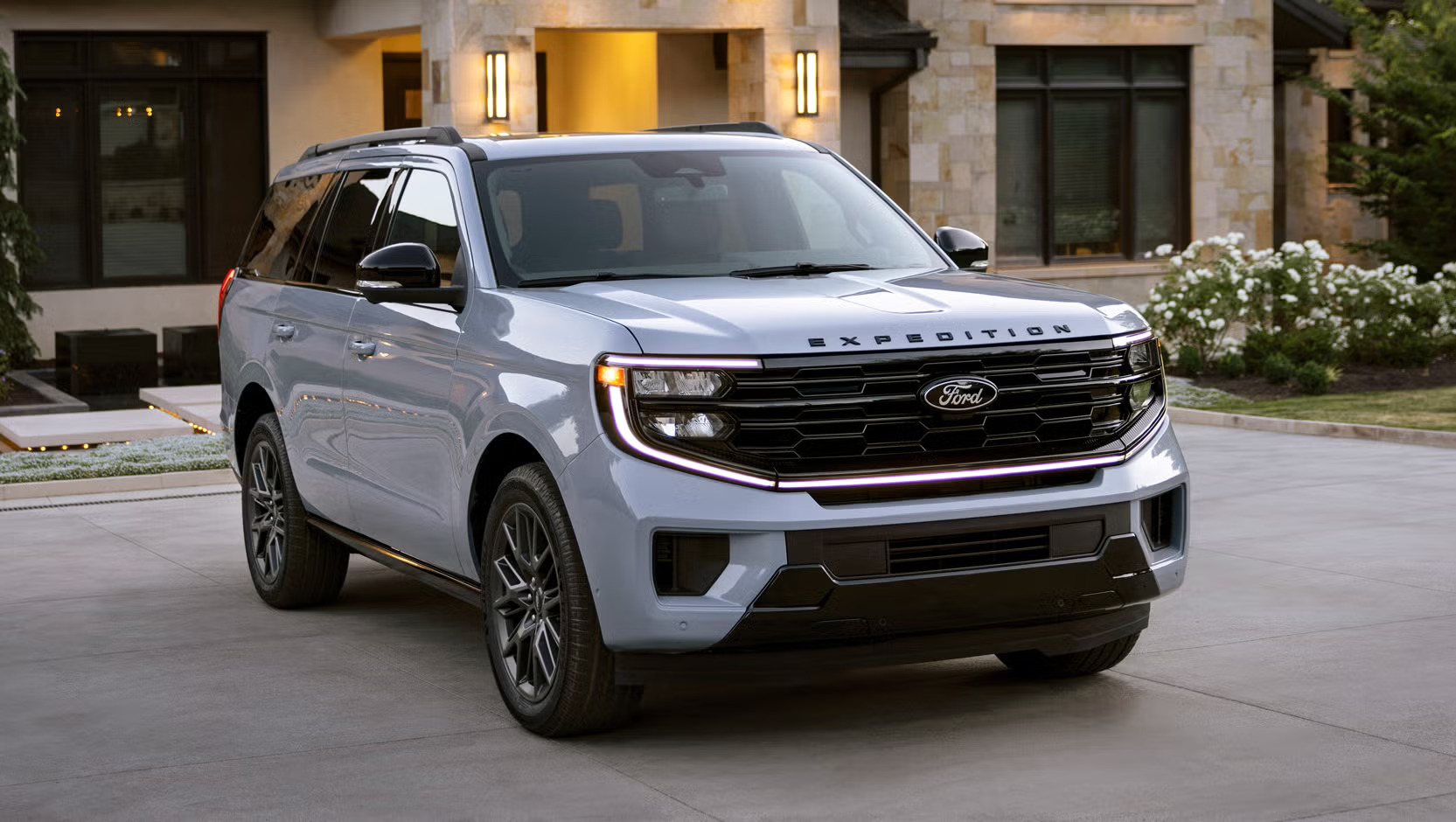
2. Ford Expedition (including MAX variant)
The Ford Expedition continues to impress as one of the most well-rounded full-size SUVs in the market, especially when it comes to balancing interior space, towing capability, and roof-rack utility.
Boasting a dynamic roof load limit that often ranges between 200 to 250 pounds, the Expedition is ideal for families or adventurers who need to haul more gear without sacrificing cabin space.
This is particularly important for large groups traveling with camping equipment, bikes, skis, or even a rooftop tent — all of which can quickly eat into load capacities on lesser vehicles. The Expedition’s strength comes largely from its body-on-frame design, shared with its pickup sibling, the Ford F-150.
This design enables better structural load management, especially across the roof rails and pillars. The long wheelbase variant — the Expedition MAX — offers not only more internal cargo space but also increased roof span, which can support longer racks or dual-load systems.
Whether you’re hauling a surfboard and cargo box combo or mounting a full-length tent platform, the Expedition can handle it with relative ease. Ford’s factory rack systems are already strong, but aftermarket companies like Yakima and Thule offer reinforced options for those wanting to push the limits.
Additionally, the Expedition’s driving dynamics remain relatively composed even when top-heavy. Thanks to Ford’s independent rear suspension, adaptive cruise control, and available terrain management systems, the vehicle can counteract the shifts in center of gravity caused by roof-mounted gear.
Many large SUVs struggle with this, feeling wobbly or delayed in handling when overloaded. The Expedition, however, offers a reassuring ride and maintains stability both on highways and mild off-road conditions, even with a fully loaded roof.
Where it sometimes falls short is in aerodynamic efficiency. Its broad front face and extended roofline can create significant wind resistance when loaded, which will affect fuel efficiency.
However, for many buyers in this segment, that trade-off is acceptable given the enormous benefits in passenger and cargo capacity. The Expedition isn’t just a family vehicle — it’s a mobile base camp, a towing powerhouse, and a gear-hauling champion with the roof strength to prove it.
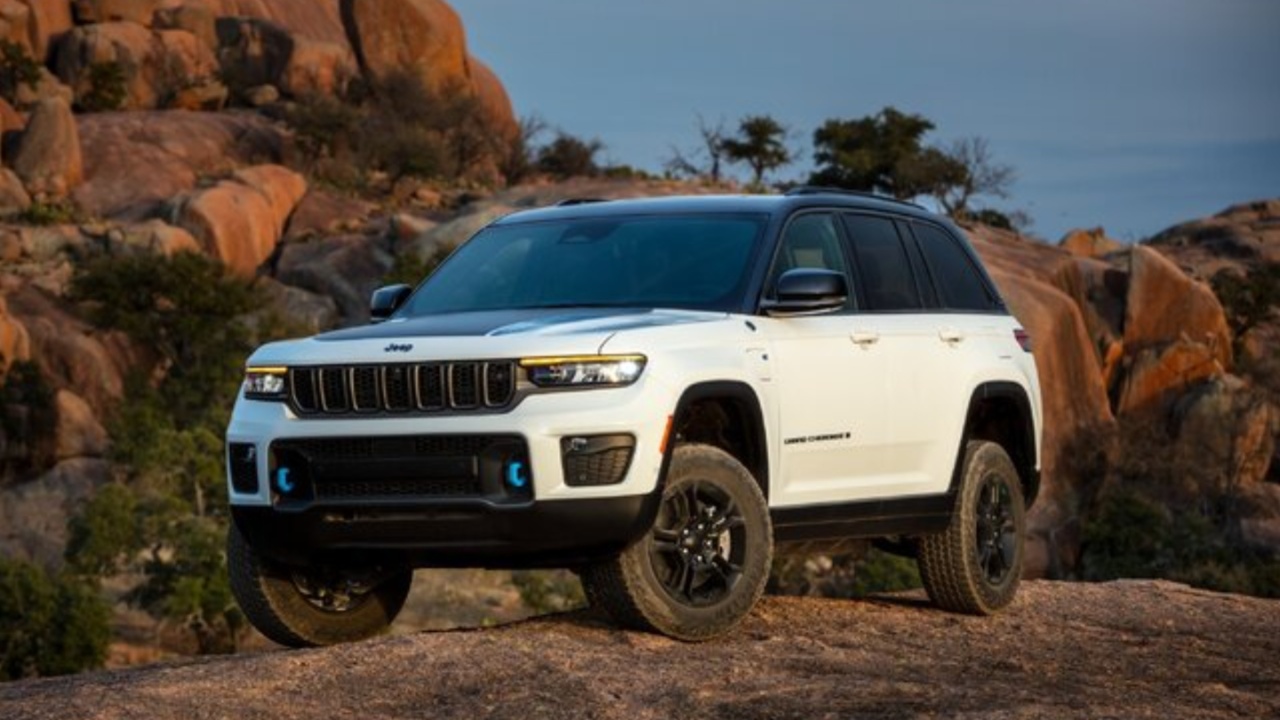
3. Jeep Grand Cherokee Trailhawk
The Jeep Grand Cherokee Trailhawk is a rare blend of off-road readiness and daily driving comfort, and it proves that you don’t need a full-size SUV to get solid roof-rack performance. With a dynamic roof load limit of approximately 150 to 165 pounds, the Trailhawk may not lead the class in numbers, but it punches above its weight due to smart design and robust build quality. For many owners, especially overlanders and backcountry explorers, this SUV hits the sweet spot between capability and compactness.
A major advantage of the Trailhawk trim is that it comes purpose-built for tougher terrain. This includes reinforced roof rails and structural supports that can bear real-world loads like rooftop tents, cargo baskets, or even emergency recovery equipment.
Jeep didn’t merely add aesthetic roof rails — it made them functional components of a vehicle that is designed to handle challenging conditions. The fact that many Trailhawk owners successfully run roof platforms for backcountry travel speaks volumes about the vehicle’s real-world utility.
From a performance standpoint, the Grand Cherokee Trailhawk is particularly agile under load. Thanks to its Quadra-Drive II 4WD system, electronic limited-slip differential, and air suspension, the SUV can maintain balance and traction even with gear on top.
This makes it a top contender for those venturing into areas where even a slight imbalance can affect vehicle control. Whether traversing muddy paths or rocky switchbacks, the Grand Cherokee’s combination of capability and balance makes it stand out among midsize SUVs.
Of course, the Grand Cherokee isn’t without compromises. While the roof can handle a decent load, interior space is more limited compared to full-size SUVs, which may push more of your gear up top. That said, the trade-off is a more manageable vehicle in urban environments and narrow trails.
For buyers who want a refined SUV that doesn’t shy away from weekend adventure — and can carry a respectable roof load — the Trailhawk trim is a smart, capable choice that doesn’t skimp on utility.
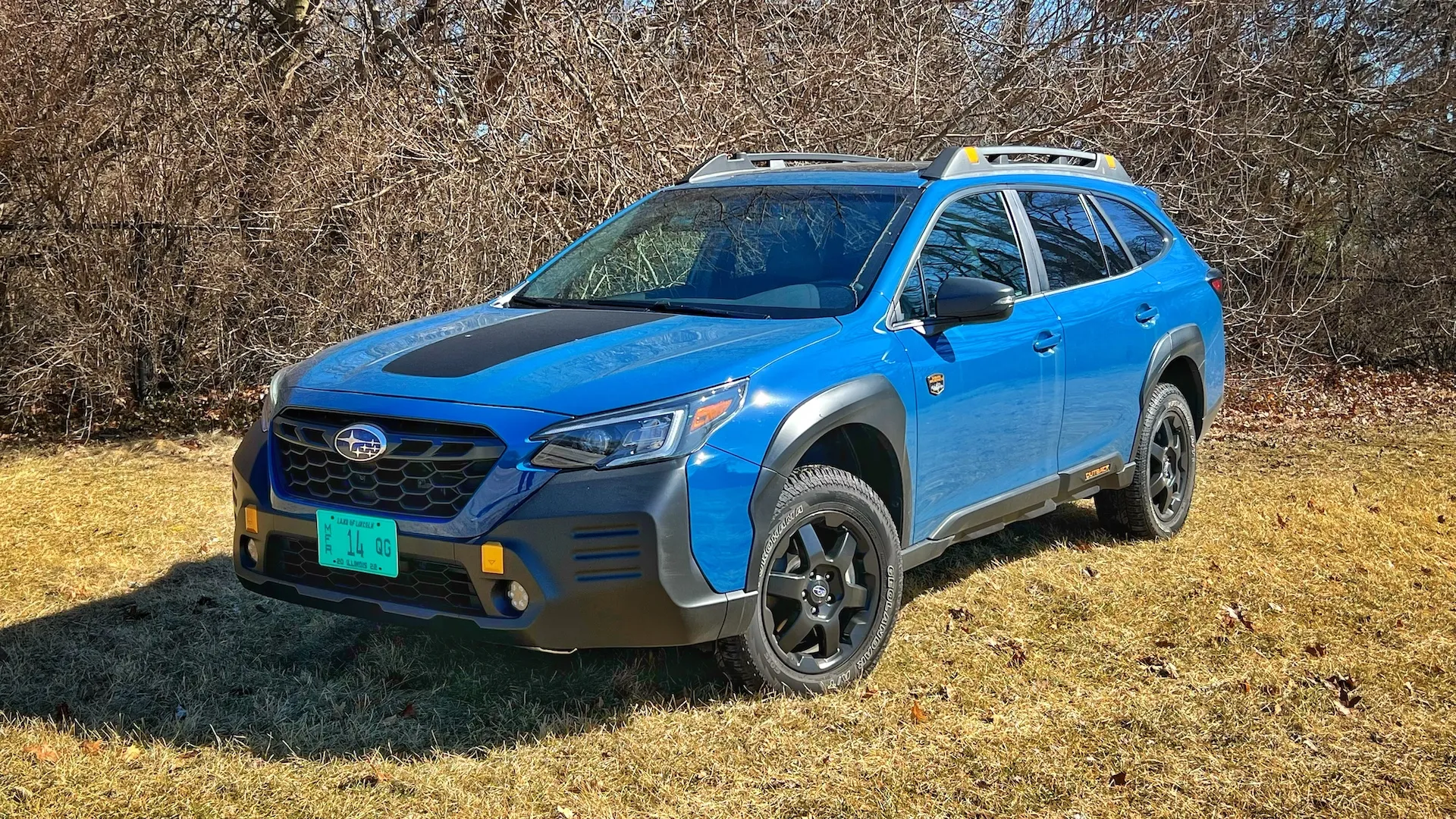
4. Subaru Outback Wilderness
Though often categorized as a wagon or crossover, the Subaru Outback Wilderness earns its SUV credibility through sheer engineering focus on adventure and utility. What sets this vehicle apart in the roof-rack category is its impressive dynamic load limit of up to 220 pounds and an even more astonishing static load capacity of around 700 pounds.
That’s enough to support a full rooftop tent with occupants, making it one of the few vehicles in its class ready for off-grid overnights without a trailer or truck bed.
Subaru designed the Wilderness edition specifically for overland-style users. The roof rails are not only redesigned for extra durability but also optimized in terms of shape and mounting flexibility.
Many standard Outbacks already had useful roof systems, but the Wilderness trim upgrades the weight-bearing structure, allowing adventurers to confidently load kayaks, bikes, cargo pods, and tents — sometimes all at once. The result is a vehicle that acts far bigger than it is, especially when fully kitted out with accessories.
Another major strength lies in how the Outback handles while loaded. Thanks to its symmetrical all-wheel drive, lifted suspension, and X-Mode terrain control, it remains incredibly stable and predictable even with high-mounted cargo.
The lower ride height (compared to full-size SUVs) means loading is easier and less risky, while still maintaining ground clearance and approach angles that are very respectable for a crossover. Subaru’s commitment to real-world usability makes this vehicle a top choice for solo adventurers and couples who don’t want the bulk of a full-size rig.
That said, the Outback isn’t going to tow large trailers or climb steep rocks like a Jeep Wrangler, but it does offer something those vehicles can’t: a perfect harmony between car-like drivability and SUV-grade utility.
For those who value versatility, reliability, and impressive roof-rack performance in a compact package, the Outback Wilderness stands out as one of the smartest buys in its class.
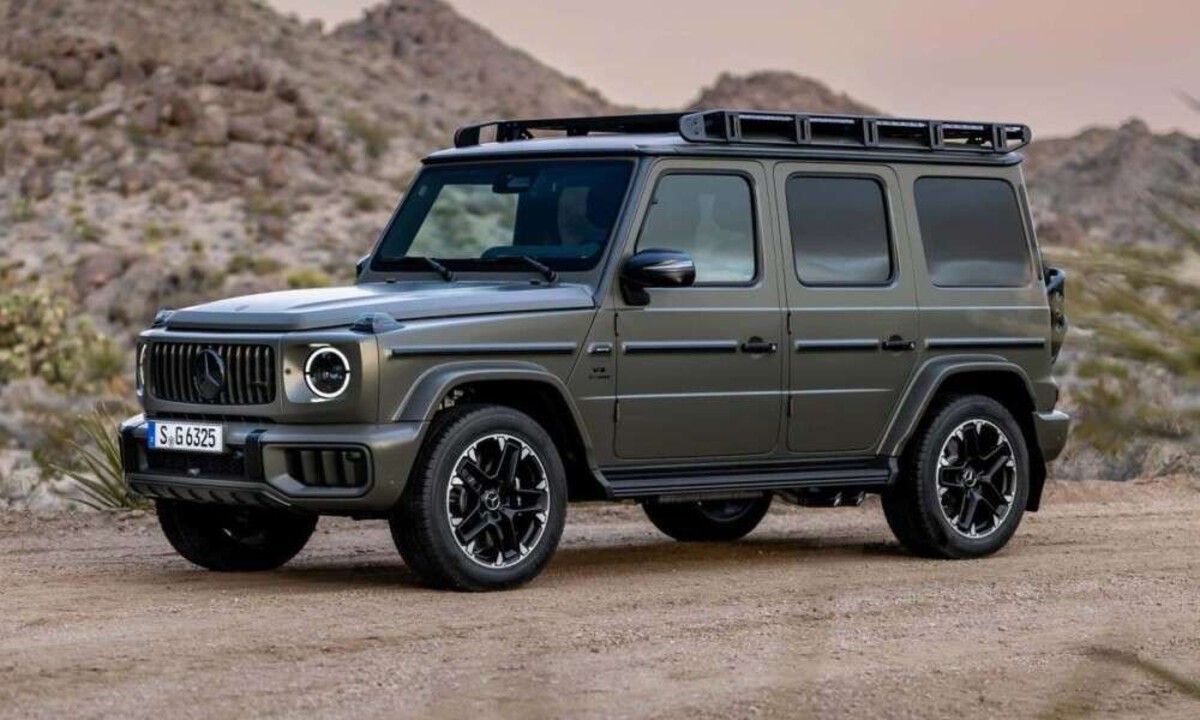
5. Mercedes-Benz G-Class (G-Wagon)
The Mercedes-Benz G-Class, often seen as a luxury icon, hides a very serious off-road and utility pedigree behind its designer exterior. Among its many capabilities, the G-Wagon also boasts a solid dynamic roof load rating of around 200–250 pounds, with static loads pushing higher, especially when outfitted with professional-grade racks.
Unlike many luxury SUVs that offer roof rails as more of a cosmetic flourish, the G-Wagon’s roof system is engineered for real use — just ask military units or remote expedition teams that rely on the platform.
The G-Class’s origin as a military vehicle shows in its structural rigidity. The flat, boxy roof offers an ideal surface for large racks, solar panels, water tanks, or rooftop tents.
Mercedes supports a range of official accessories, and the aftermarket ecosystem is rich with adventure-grade options that attach directly to the factory points. Whether you’re planning an Arctic crossing or a luxury glamping weekend, the G-Wagon’s roof can accommodate the gear to match.
One underrated element of the G-Class is its ability to carry roof weight without compromising handling to the extent you’d expect. Its wide stance, high-quality suspension, and advanced driving assistance systems mitigate the typical disadvantages of high roof loads.
The optional adaptive dampers and electronically controlled sway bars provide dynamic response adjustments that are useful when driving under heavy top-load conditions. It’s still a tall, top-heavy SUV, but it handles like something much more planted.
Of course, the G-Wagon’s greatest barrier is its price. It is, without question, a premium vehicle — but for those who can afford it, it offers a rare combination: unmatched prestige with true adventure readiness.
Very few luxury SUVs can carry a full roof rack, traverse serious terrain, and look good while doing it. The G-Class makes no apologies for being both a status symbol and a serious gear-hauler, and that’s why it deserves a place in the top five.
5 SUVs with the Lowest Roof-Rack Load Limits
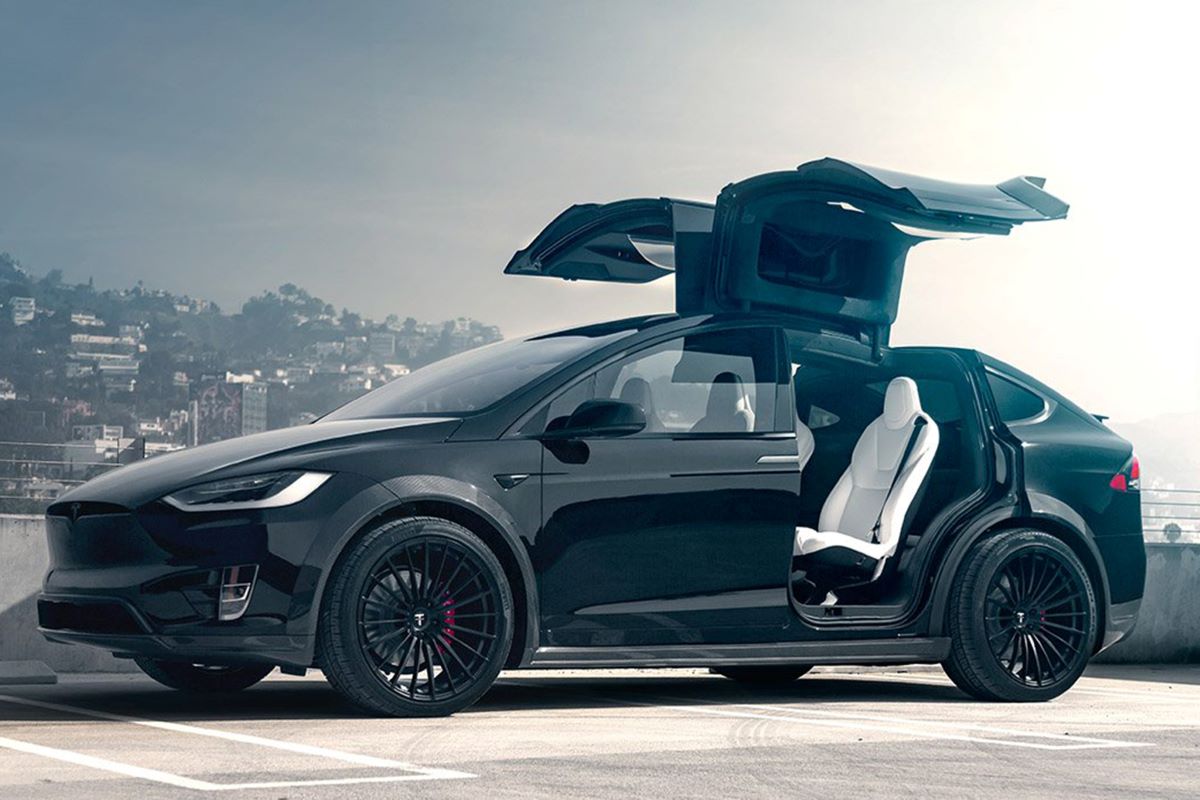
1. Tesla Model X
The Tesla Model X is one of the most futuristic SUVs on the road, boasting cutting-edge electric performance, advanced driver-assist systems, and iconic falcon-wing doors. Yet, despite its many technological accomplishments, the Model X is a surprising underperformer when it comes to roof-rack load capacity.
Officially, Tesla restricts the Model X roof load to around 165 pounds (75 kg) on its factory rack — and even that is under ideal conditions. For a vehicle its size, this rating is unexpectedly low and significantly limits its outdoor practicality, particularly for those with camping or adventure gear in mind.
Part of the reason for this limitation lies in the vehicle’s overall design. The falcon-wing doors — while an engineering marvel — directly interfere with traditional roof rail mounting systems. Because of this, Tesla’s own roof rack must be attached to the front section of the roof only, drastically reducing the surface area and overall rack footprint.
This also shifts weight distribution forward, affecting balance. Not only does this reduce usable space for wider racks or rooftop tents, but it also creates concerns about load stability at higher speeds or in crosswinds.
Beyond the doors, the Model X features a panoramic glass roof, which introduces another structural challenge. While reinforced, the glass doesn’t provide the same rigidity or structural support as a steel roof.
This limits the vehicle’s ability to bear additional static or dynamic weight up top without risking damage or stress to the roof architecture.
In practical terms, this means rooftop tents, long gear like kayaks, or dual-load systems (tent plus cargo box, for example) are essentially out of the question. The Model X was designed more for urban sophistication and efficiency, not for rugged hauling.
Ultimately, this SUV is ideal for those focused on clean tech, performance, and comfort — not for utility or adventure. It’s a reminder that despite being classified as an SUV, the Model X doesn’t adhere to traditional expectations of cargo or rack performance.
Buyers seeking roof-load capability will be better served by a more conventional SUV, particularly if adventure gear is part of their lifestyle.
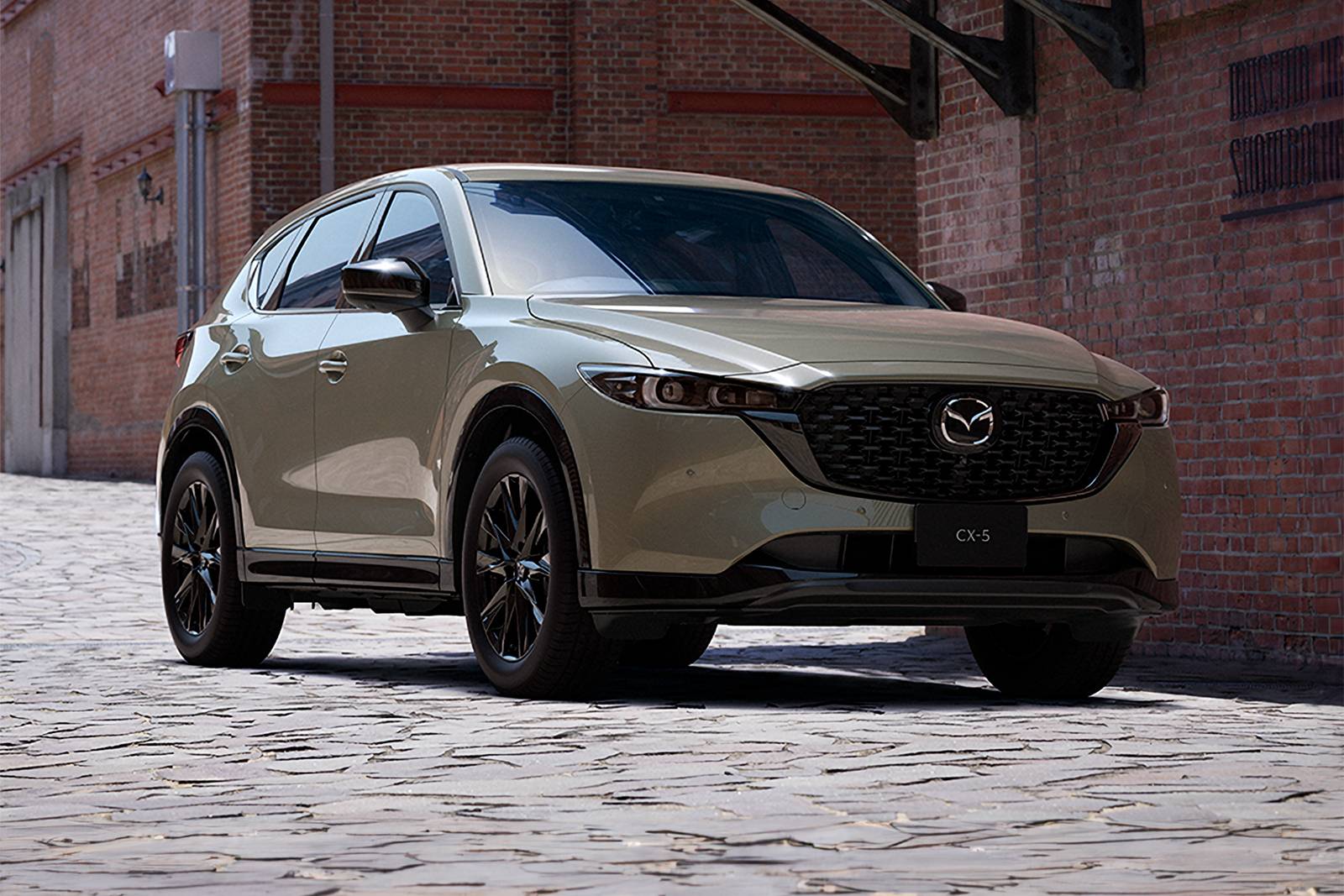
2. Mazda CX-5
The Mazda CX-5 has long been praised for its sporty handling, sleek design, and upscale interior, punching well above its weight class in terms of refinement.
But for those seeking rooftop cargo flexibility, it comes with a caveat: a very limited dynamic roof-rack load capacity of approximately 100–150 pounds, depending on model year and configuration. This relatively low rating is a significant drawback in a segment where competitors often offer more.
Mazda’s design philosophy prioritizes sleek aesthetics and lightweight engineering, which affects structural elements like the roof and crossbar system. Unlike larger or more rugged SUVs, the CX-5 doesn’t have deeply integrated roof rails built into the core frame.
Instead, many versions come with optional or add-on rails, which are often capped at lower load ratings. This limits what owners can mount up top — ruling out larger rooftop tents, wide gear carriers, or multi-gear systems unless they remain extremely lightweight.
To make matters more limiting, the CX-5’s ride height and compact proportions can work against it when loaded up. Even moderate weight on the roof significantly affects the handling of this vehicle, which was tuned more like a sports sedan than a rugged SUV.
The center of gravity shifts rapidly, especially with taller loads like bikes or kayak racks, leading to noticeably different cornering behavior and increased wind noise. There are no built-in stabilizers or ride-adjustment systems that compensate for this — what you load is what you feel.
While the CX-5 excels as a city commuter or a stylish family vehicle, its roof-rack limitations reduce its viability for long-haul adventures or gear-intensive weekend trips. It’s not a dealbreaker for everyone — especially those only needing light cargo options — but it’s certainly a key limitation for outdoor enthusiasts.
For a vehicle that otherwise competes fiercely with larger, more rugged SUVs, its underwhelming roof utility is a clear weakness in its otherwise polished resume.
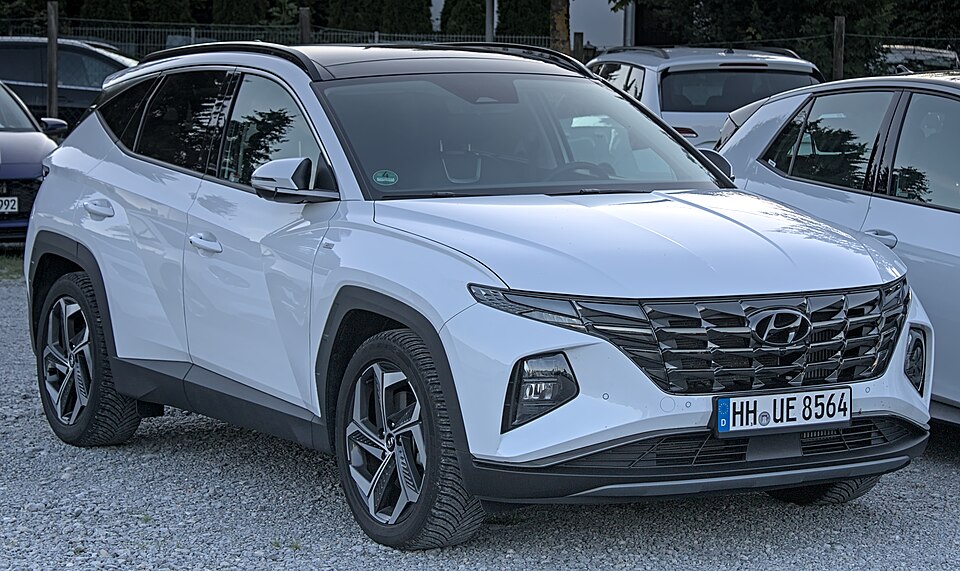
3. Hyundai Tucson
The Hyundai Tucson has made leaps and bounds in recent years in terms of design, tech features, and value. It offers advanced safety systems, hybrid powertrains, and a stylish, modern look that puts it near the top of its class for everyday family use.
However, its roof-rack load capacity is among the lowest in the compact SUV category, hovering between 100 to 150 pounds on most factory-equipped models. This makes it less than ideal for buyers looking to maximize roof space for outdoor gear or extended travel.
One of the main contributors to the low roof capacity is the unibody construction and lightweight materials used in Tucson’s body panels and roof structure.
Hyundai has focused on fuel efficiency and cost-effectiveness, which is great for daily drivers but introduces limits when it comes to durability and structural load-bearing. The factory-installed roof rails, when included, are relatively basic and not integrated deeply into the car’s skeleton, reducing the maximum safe load they can support.
Another concern is that many Tucson trims offer panoramic glass roofs or sunroofs, which further reduce load-bearing potential. Glass roof panels are inherently more fragile and less supportive than steel or aluminum counterparts.
Hyundai does not typically offer heavy-duty crossbars or modular roof-rack systems for the Tucson, which means even aftermarket solutions must be approached cautiously. Mounting a tent or a heavily packed cargo box may exceed structural tolerances and risk long-term wear or immediate failure.
Ultimately, Tucson remains a strong value proposition for families and city drivers — but it’s a misfit for adventurers and heavy packers.
Those planning long-distance road trips with multiple rooftop items, or even just a fully loaded cargo carrier, may find the Tucson limiting or frustrating. It’s a classic example of a car that checks all the boxes for comfort and tech but leaves a noticeable gap in real-world utility.
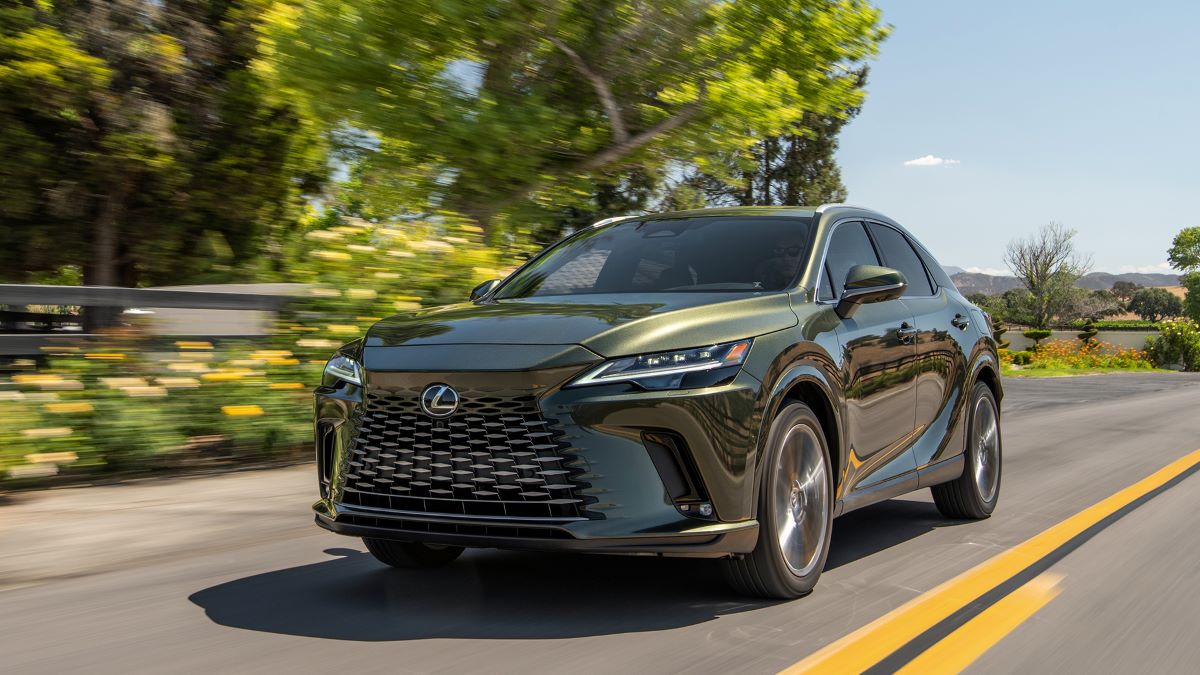
4. Lexus RX Series
The Lexus RX line is a leader in the luxury crossover SUV space, known for its silky ride quality, opulent interior, and quiet cabin. However, it’s also one of the least roof-rack-capable vehicles in its class, especially considering its premium branding.
With a dynamic roof load rating generally between 100 and 150 pounds, the RX is far less suited to outdoor adventuring than its rugged looks might suggest. That’s an issue for many buyers who expect their luxury SUV to be as versatile as it is comfortable.
Part of the problem stems from design choices focused heavily on aesthetics and ride quality rather than rugged utility. The RX’s roof is intentionally curved and smoothed for aerodynamics and visual appeal, which complicates the integration of robust roof rack systems.
The factory rails are often optional and thin, designed more for cosmetic alignment with the rest of the trim than for actual utility. Even the mounting points for aftermarket racks are limited or positioned awkwardly, reducing installation strength and flexibility.
Handling also becomes a concern when the RX is top-loaded. The suspension is tuned for comfort, not utility, and the vehicle exhibits noticeable sway or float when any significant weight is placed on the roof.
There are no adaptive or terrain-adjusting systems that can compensate for this, as you’d find in more rugged competitors like the Toyota 4Runner or even the Subaru Outback. Simply put, the RX was not built to carry things on the roof — it was built to isolate its passengers from the road.
Despite its strong reliability, excellent tech, and plush materials, the RX stumbles when asked to be more than a luxury cruiser. For casual use — carrying a small cargo pod or a couple of snowboards — it suffices.
But for rooftop tents, heavy-duty racks, or mixed load-outs, it underperforms compared to its rivals. Buyers seeking a more adventure-ready Lexus would be better off looking at the GX series, which shares a more traditional SUV backbone and roof strength.
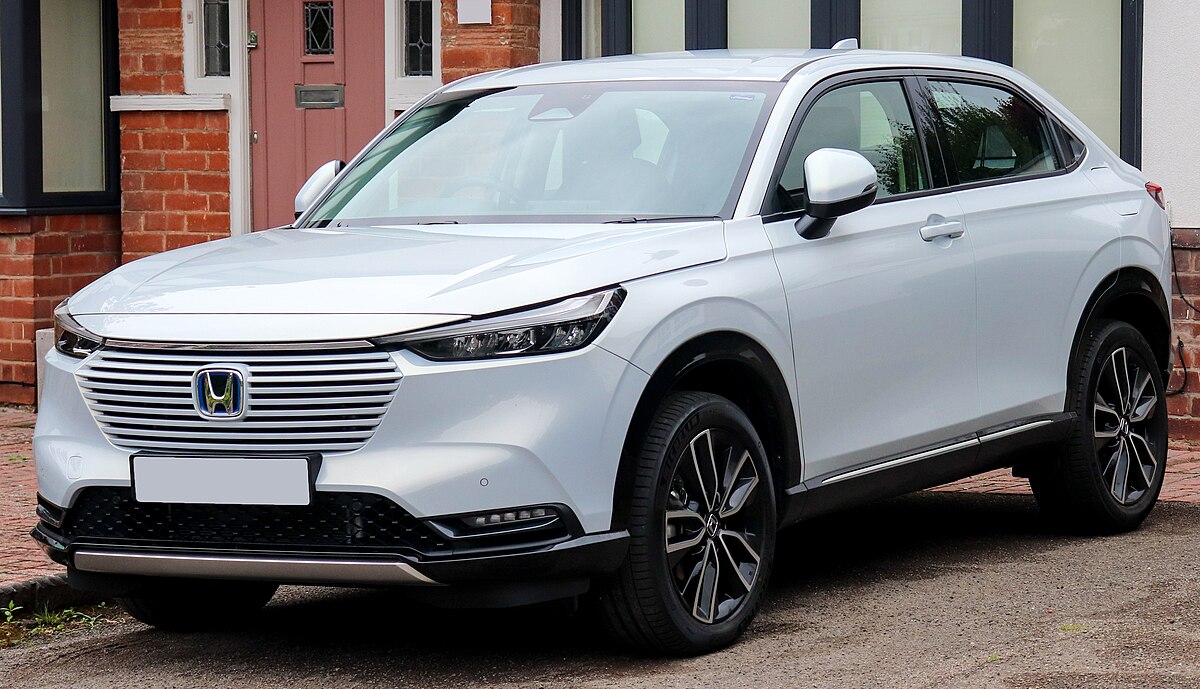
5. Honda HR-V
The Honda HR-V is one of the most popular subcompact crossovers on the market, loved for its practicality, fuel economy, and clever interior packaging. However, when it comes to roof load ratings, the HR-V clearly shows its limitations.
Most models max out at a dynamic roof load capacity of just 100 pounds, making it one of the lowest-rated SUVs in the category. This puts significant restrictions on how much — and what kind of — gear you can carry up top.
Being a compact vehicle, the HR-V was never intended for heavy-duty use, but its marketing as an “adventure-ready” urban crossover may give buyers the wrong impression. Many HR-Vs come with flush roof rails that are primarily aesthetic, not structural.
Even aftermarket crossbar systems are subject to tight constraints due to limited roof span, mounting positions, and roof material quality. For someone planning to carry a roof box filled with luggage or a bike rack setup, this means you’ll need to weigh every item carefully and often leave gear behind.
The HR-V’s size and light weight also make it more susceptible to stability issues when loaded on the roof. Because it lacks advanced suspension damping or terrain-adjustment systems, any load up top can noticeably affect ride comfort and safety.
Sharp turns, crosswinds, or emergency braking all become more pronounced with added roof weight, especially if it’s not evenly distributed or kept under the limit. This can be unnerving for drivers not accustomed to such changes in vehicle dynamics.
In short, the HR-V is a city and suburb specialist — and it does its job well in that space. But for those who require roof utility as part of their weekend lifestyle, it falls short of expectations.
Lightweight skis or a slim cargo carrier may be acceptable, but heavy loads, tents, or modular racks are simply not a safe or practical choice here. It’s a great vehicle in many ways, but rooftop utility isn’t one of them.
ALSO READ: 5 Cars With The Most Free Scheduled Maintenance Miles And 5 With None
As we reach the end of our deep dive into roof-rack load capabilities, one thing becomes abundantly clear: not all SUVs are built with the same purpose in mind. While the term “utility” may be baked into the SUV acronym, utility means different things to different manufacturers, and roof-rack capacity is where the design philosophy often diverges most dramatically.
For the gear hauler, the camper, or the overlander, a robust, load-bearing roof is non-negotiable. For the luxury cruiser or urban commuter, it may barely register as a concern. But for informed buyers, roof capacity is more than a spec — it’s a reflection of a vehicle’s real-world utility.
The five high-performing SUVs we highlighted — the Toyota Land Cruiser, Ford Expedition, Jeep Grand Cherokee Trailhawk, Subaru Outback Wilderness, and Mercedes-Benz G-Class — are each successful in their own right because they acknowledge the reality of how SUVs are used in the field.
These vehicles are built with strength, balance, and modularity in mind. Their roofs are not just ornaments but integral load platforms. Whether it’s a rooftop tent for weekend getaways, a couple of mountain bikes, a snowboarding pod, or a full-blown overland rack system, these vehicles are designed to carry it all without compromising performance or safety.
What these top-rated models also offer is confidence. When you load gear onto a Land Cruiser or Expedition, you’re not second-guessing whether a gust of wind on the highway might compromise your setup, or whether a pothole might jolt the rack loose. You know the roof — and the chassis underneath it — can handle the task.
This is especially crucial in remote travel scenarios, where failure isn’t just inconvenient, but potentially dangerous. For those buyers who plan to use every inch of their vehicle’s capability, roof-load integrity should be as important a consideration as drivetrain or tire clearance.
On the flip side, we examined five SUVs that, while successful in many domains, fall short when it comes to roof utility. The Tesla Model X, Mazda CX-5, Hyundai Tucson, Lexus RX, and Honda HR-V all carry relatively low roof-rack load limits — often in the 100–150 pound range.
That’s perfectly adequate for occasional use, such as mounting a lightweight cargo box or a small kayak. However, it leaves little room for the heavier and more modular setups many drivers are adopting today. In these cases, the roof becomes more decorative than functional — a blank space that could offer more, but simply doesn’t.
It’s important to clarify that these vehicles aren’t inherently bad — in fact, most of them are top sellers and fan favorites in their class. But their design priorities lie elsewhere: comfort, fuel efficiency, technology, and aesthetics. If you’re never planning to carry more than a suitcase and a duffel bag up top, these low roof limits might never bother you.
But for those envisioning extended road trips, camping adventures, or cross-country hauls with all the trappings, these SUVs can quickly become restrictive and frustrating.
The broader takeaway here is that buyers should always consider how they plan to use their SUV, not just how it looks or drives.
Roof load limit may seem like a minor technical detail buried in the manual, but it directly impacts how much freedom and flexibility you really have with your vehicle. It determines whether your SUV is a platform for adventure or just a stylish people mover.
In the age of vanlife, rooftop living, and ever-more adventurous travel, choosing a vehicle that supports your lifestyle — gear and all — is more important than ever. So before you install that roof rack or pick up that rooftop tent, ask yourself: can your SUV truly handle the weight of your journey?
